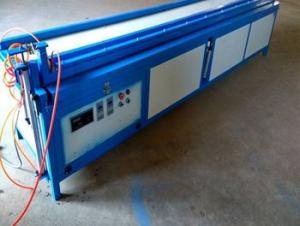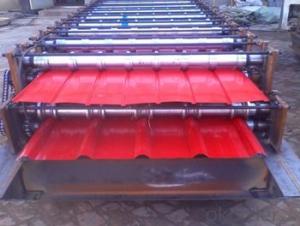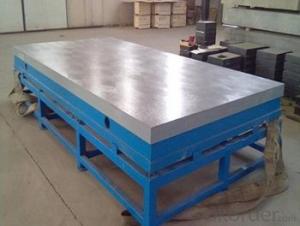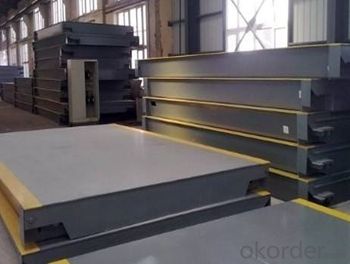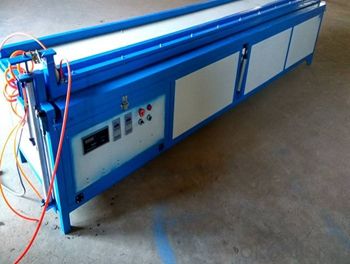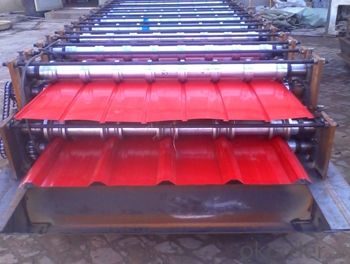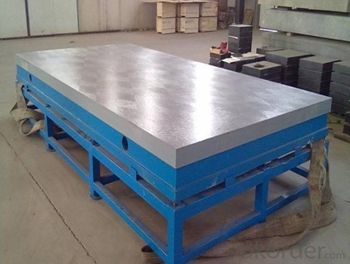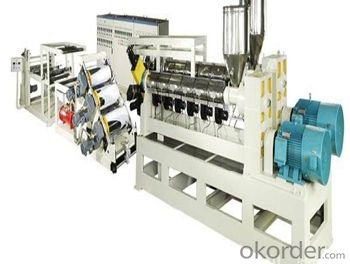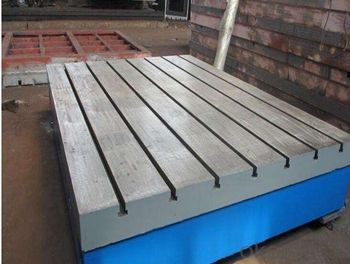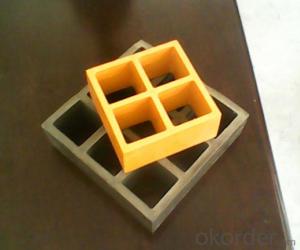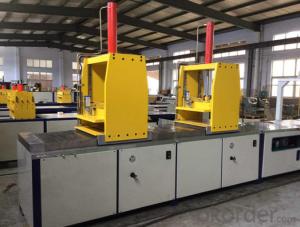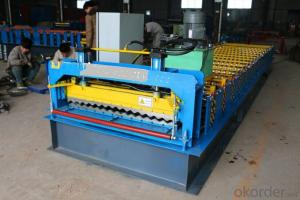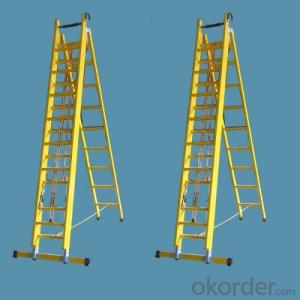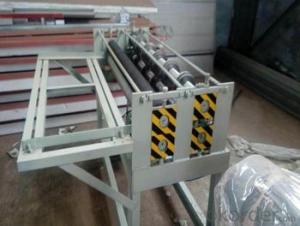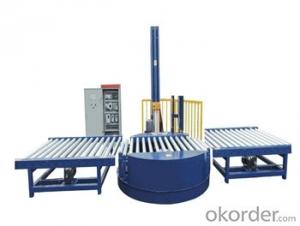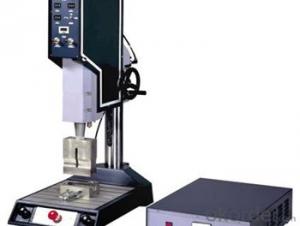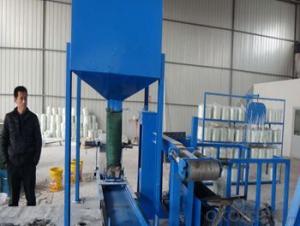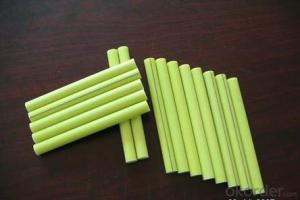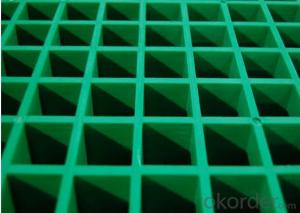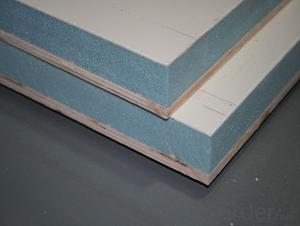FRP Pultrusion Profiles - Vivid Color FRP Pultruded Grating with Toxic Warning
- Loading Port:
- Tianjin
- Payment Terms:
- TT OR LC
- Min Order Qty:
- 1 m.t.
- Supply Capability:
- 100000 m.t./month
OKorder Service Pledge
OKorder Financial Service
You Might Also Like
FRP PULTRUDED GRATING AND PULTRUSION PROCESS
PRODUCT DESCRIPTION
Pultruded grating is made by a particular assembly process, which using “I” shape as its main load-bearing and special rod to go through the bearing bar. Pultruded grating include the standard grating and the custom grating, the custom grating can be designed to meet customer’s requirement or special using condition by changing the shape, size and space of the bearing bars, the surface can be covered with lozenge panel, grit panel, or added the anti-slippery sand directly.
FRP pultruded grating has the most characteristics of molded grating, but it has its distinct advantages, it has very high fiberglass content in the loading direction, so it has very high load capability, it has more superiority when used at wide span, so that the basic support will be decreased and the project cost will be reduced accordingly.
SPECIFICATION
The standard space between two crossbars is 6 inch or 12 inch.
Thickness (mm) | Bar width (mm) | Open space (mm) | Open rate (%) | Approx weight (kg/m |
25.4 | 15.2 | 22.8 | 60 | 13.2 |
25.4 | 15.2 | 15.2 | 50 | 15.9 |
25.4 | 15.2 | 10.1 | 40 | 18.5 |
25.4 | 40 | 10.8 | 21 | 14.5 |
38.1 | 15.2 | 22.8 | 60 | 15.8 |
38.1 | 15.2 | 15.2 | 50 | 19.1 |
38.1 | 15.2 | 10.1 | 40 | 22.4 |
50.8 | 25.4 | 25.4 | 50 | 16.6 |
50.8 | 25.4 | 12.7 | 33 | 21.1 |
CHOICE FOR PULTRUDED GRATING
Resin: GP resin, ISO resin, VE resin, Phenol resin
Color choice: Yellow, gray, green, custom color
Surface choice: Groove surface, grit surface, lozenge cover surface
FEATURES
a. Anti-corrosion and anti-rust
b. Light weight and high strength
c. Anti-flammable
d. Anti- fatigue
e. Safe and anti-slippery
f. Anti-ageing
g. Easy of maintenance
h. Excellent electromagnetism property
i. Good economic benefit
FIELDS SERVED
Sewage treatment,
water supply and drainage,
chemical industry,
oil industry,
power engineering,
pulp and paper,
construction engineering,
spinning, marine engineering.
COMPANT DESCRIPTION
CNBM,China National Building Materials Group is a state-owned enterprise in charge of administrative affairs in china building materials industry. Established in 1984, CNBM is a large group corporation of building materials with total assets of 25 billion RMB and a total staff of 30,000.CNBM now owns 200 subordinating firms of solely owned and joint-venture companies.
CNBM International Corporation is one subsidiary of CNBM, we focus on offering good-quality products,professional service and complete solution to our customers. Strong delivery capacity, advanced technology& management, strong financing capability and excellent after-sale service are our advantages in sharing international market.
FAQ
1.Q:Are you factory or trading company ?
A:We are Factory produce FRP machines and FRP products.
2.Q:If can customized by customers requirements?
A:yes,we can produce the machine with customized size.
3.Q:How about the payment?
A:We accept any kind of payment.
4.Q:What is the guarantee?
A:Gurantee is one year.
5.Q:If you can training?
A:yes ,we can training in our factory also can send engineers to your factory training.
PICTURES

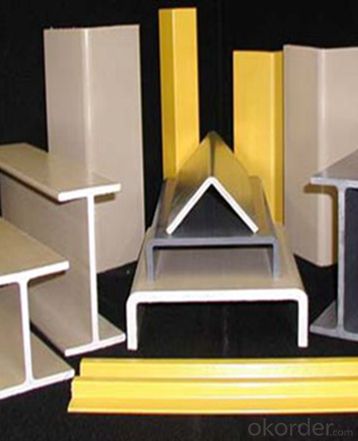
- Q: How do FRP pultrusion profiles handle cyclic loading?
- FRP pultrusion profiles are known for their excellent performance under cyclic loading conditions. The unique combination of materials and manufacturing process used in pultrusion makes these profiles highly resistant to fatigue and cyclic loading effects. One key factor that contributes to the superior performance of FRP pultrusion profiles under cyclic loading is their inherent high strength-to-weight ratio. These profiles are made using continuous fibers, typically fiberglass, which are impregnated with a resin matrix. This results in a lightweight yet strong material that can handle repeated loading without experiencing significant degradation or fatigue. Additionally, the pultrusion process allows for precise control over the fiber orientation and resin distribution within the profile. This results in a uniform and consistent material composition throughout the entire length of the profile. As a result, FRP pultrusion profiles exhibit excellent load distribution characteristics, minimizing stress concentrations and preventing localized failure under cyclic loading conditions. Furthermore, the corrosion resistance of FRP pultrusion profiles plays a crucial role in their ability to handle cyclic loading. Unlike traditional materials such as steel, FRP profiles do not suffer from corrosion-related issues, such as rust or pitting. This corrosion resistance ensures that the profiles maintain their structural integrity even when subjected to cyclic loading over extended periods of time. Overall, FRP pultrusion profiles are specifically designed and manufactured to withstand cyclic loading conditions. Their high strength-to-weight ratio, uniform material composition, and corrosion resistance make them ideal for applications where cyclic loading is a significant factor. Whether it's in structural reinforcements, bridges, sporting equipment, or various industrial applications, FRP pultrusion profiles have proven to be reliable and durable under cyclic loading.
- Q: Can FRP pultrusion profiles be used in the construction of water treatment plants?
- Yes, FRP (Fiber Reinforced Polymer) pultrusion profiles can be used in the construction of water treatment plants. FRP pultrusion profiles offer several advantages such as high strength-to-weight ratio, corrosion resistance, and durability, making them well-suited for water treatment plant applications. These profiles can be used in various structural components like beams, columns, grating, and handrails, providing a cost-effective and long-lasting solution for the construction of water treatment plants.
- Q: Can FRP pultrusion profiles be used in the construction of amusement park rides?
- Yes, FRP pultrusion profiles can be used in the construction of amusement park rides. FRP (Fiber Reinforced Polymer) pultrusion profiles offer high strength-to-weight ratio, corrosion resistance, and durability, making them suitable for various applications in amusement park rides. These profiles can be used for structural components, such as supports, frames, and beams, as well as for aesthetic elements like facades or decorative structures. Additionally, FRP pultrusion profiles can be customized to meet specific design requirements, making them a versatile choice for constructing amusement park rides.
- Q: Are FRP pultrusion profiles resistant to alkalis?
- FRP pultrusion profiles are generally able to resist alkalis. This is because FRP composites are materials made of a polymer matrix reinforced with fibers like glass or carbon. The polymer matrix in FRP pultrusion profiles has excellent resistance to alkalis, making them suitable for use in places where alkalis are present, such as chemical processing plants, wastewater treatment facilities, or marine structures. However, the resistance of FRP pultrusion profiles to alkalis may vary depending on factors like the type of polymer resin used and the concentration and temperature of the alkali solution. Therefore, it is important to refer to the manufacturer's specifications or perform specific tests to ensure that FRP pultrusion profiles are compatible with the intended alkali environment.
- Q: Are FRP pultrusion profiles resistant to electrical surges or lightning strikes?
- FRP pultrusion profiles have inherent electrical insulation properties due to their composition of fiberglass reinforcement and resin matrix. This insulation makes them resistant to electrical surges and lightning strikes to some extent. However, it is important to note that no material can provide absolute protection against extremely high voltage electrical surges or direct lightning strikes. In such cases, additional measures like grounding and lightning protection systems are necessary to ensure the safety of structures or equipment. Therefore, while FRP pultrusion profiles offer some level of resistance to electrical surges and lightning strikes, it is advisable to consult with experts and adhere to relevant safety standards when designing and installing electrical systems in areas prone to such events.
- Q: How do FRP pultrusion profiles perform in high-humidity environments?
- FRP pultrusion profiles have a reputation for their exceptional performance in environments with high levels of humidity. The combination of reinforced fibers and polymer matrix in FRP profiles gives them the ability to withstand the detrimental effects of moisture and humidity. One of the main advantages of FRP materials is their natural resistance to corrosion, which is particularly important in high-humidity environments where moisture levels are significantly higher. Unlike traditional materials like steel or wood, FRP pultrusion profiles don't rust, rot, or decay when exposed to moisture. This makes them ideal for various applications that involve constant exposure to humidity, such as coastal areas or industrial settings. Moreover, the polymer matrix used in FRP profiles acts as a barrier against moisture absorption. This prevents the profiles from expanding, warping, or cracking, even under extreme humidity conditions. The high-strength fibers embedded in the polymer matrix provide additional reinforcement, ensuring the profiles maintain their structural integrity and dimensional stability over time. Furthermore, FRP pultrusion profiles are also resistant to the growth of mold and mildew, which are commonly associated with high-humidity environments. This feature is highly advantageous as it reduces the need for frequent maintenance and cleaning, making FRP profiles a cost-effective and low-maintenance solution. In conclusion, FRP pultrusion profiles demonstrate exceptional performance in environments with high levels of humidity. Their resistance to corrosion, moisture absorption, and mold growth make them a reliable choice for applications that require durability and longevity in such conditions.
- Q: Can FRP pultrusion profiles be customized according to specific requirements?
- Yes, FRP (Fiber Reinforced Polymer) pultrusion profiles can be customized according to specific requirements. Pultrusion is a manufacturing process that involves pulling continuous fibers through a liquid resin bath, then through a heated die to cure the resin and form the desired shape. This process allows for great flexibility in design and customization. The customization options for FRP pultrusion profiles include various dimensions, shapes, colors, and surface finishes. The dimensions can be tailored to meet specific length, width, and thickness requirements. The shapes can range from basic geometries like rectangular or round profiles to more complex designs with custom cross-sections. In terms of color, FRP pultrusion profiles can be pigmented during the manufacturing process to achieve the desired color or can be painted or coated afterwards. This allows for matching specific color requirements or ensuring compatibility with existing structures or products. Furthermore, surface finishes can be customized to achieve desired properties such as increased slip resistance, UV resistance, or fire resistance. Surface treatments like sanding, coating, or adding special additives can be applied to meet specific performance requirements. Overall, FRP pultrusion profiles offer a high level of customization to meet specific project or application needs. They are versatile, lightweight, corrosion-resistant, and have excellent strength-to-weight ratios, making them suitable for various industries such as construction, transportation, infrastructure, and aerospace.
- Q: Are FRP pultrusion profiles fire resistant?
- FRP pultrusion profiles exhibit excellent fire resistance due to the combination of reinforcing fibers and the polymer matrix employed in their production. These profiles are crafted through the pultrusion process, wherein reinforcing fibers like fiberglass or carbon fiber are impregnated with a thermosetting resin. This resin undergoes a curing process, resulting in a robust and durable composite material. One of the primary advantages of FRP pultrusion profiles lies in their inherent fire resistance. The thermosetting resin utilized in their manufacture possesses properties that render it highly impervious to fire. When subjected to flames or elevated temperatures, the resin does not easily burn or melt, thereby impeding the propagation of fire. Moreover, the reinforcing fibers present in FRP profiles contribute significantly to their fire resistance. For example, fiberglass, being an inorganic substance, does not combust. It serves as a heat transfer barrier, aiding in the containment of flames. Additionally, FRP pultrusion profiles can be engineered to meet specific fire safety standards and regulations. By incorporating supplementary fire retardant additives or employing specialized resin systems, the fire resistance of these profiles can be further enhanced. It is crucial to note that although FRP pultrusion profiles do possess fire resistance, their precise fire rating may vary depending on the particular composition and design. Thus, it is imperative to consult manufacturers or suppliers who can furnish comprehensive information regarding the fire resistance properties of their FRP pultrusion profiles.
- Q: Are FRP pultrusion profiles resistant to rotting or decaying?
- Yes, FRP (Fiber Reinforced Polymer) pultrusion profiles are highly resistant to rotting or decaying. This is because FRP is composed of a combination of fiber reinforcement, such as fiberglass, and a polymer resin matrix. Unlike traditional materials like wood, which are susceptible to rot and decay when exposed to moisture and environmental elements, FRP pultrusion profiles are non-porous and do not absorb water. Additionally, the polymer resin used in FRP is highly resistant to chemical corrosion, making it unaffected by rot-causing agents such as fungi or bacteria. As a result, FRP pultrusion profiles have a significantly longer lifespan and require minimal maintenance compared to traditional materials, making them an excellent choice for applications where resistance to rotting or decaying is essential.
- Q: How do FRP pultrusion profiles handle bending and flexing?
- FRP pultrusion profiles are designed to handle bending and flexing exceptionally well due to their inherent structural properties. The combination of reinforcing fibers, such as fiberglass, and a polymer resin matrix in the pultruded profiles results in high strength and stiffness. This allows the profiles to withstand bending forces without any significant deformation or failure. Additionally, the ability of FRP to withstand flexing is attributed to its high fatigue resistance, making it suitable for applications that require repeated bending or flexing movements.
Send your message to us
FRP Pultrusion Profiles - Vivid Color FRP Pultruded Grating with Toxic Warning
- Loading Port:
- Tianjin
- Payment Terms:
- TT OR LC
- Min Order Qty:
- 1 m.t.
- Supply Capability:
- 100000 m.t./month
OKorder Service Pledge
OKorder Financial Service
Similar products
Hot products
Hot Searches
Related keywords

